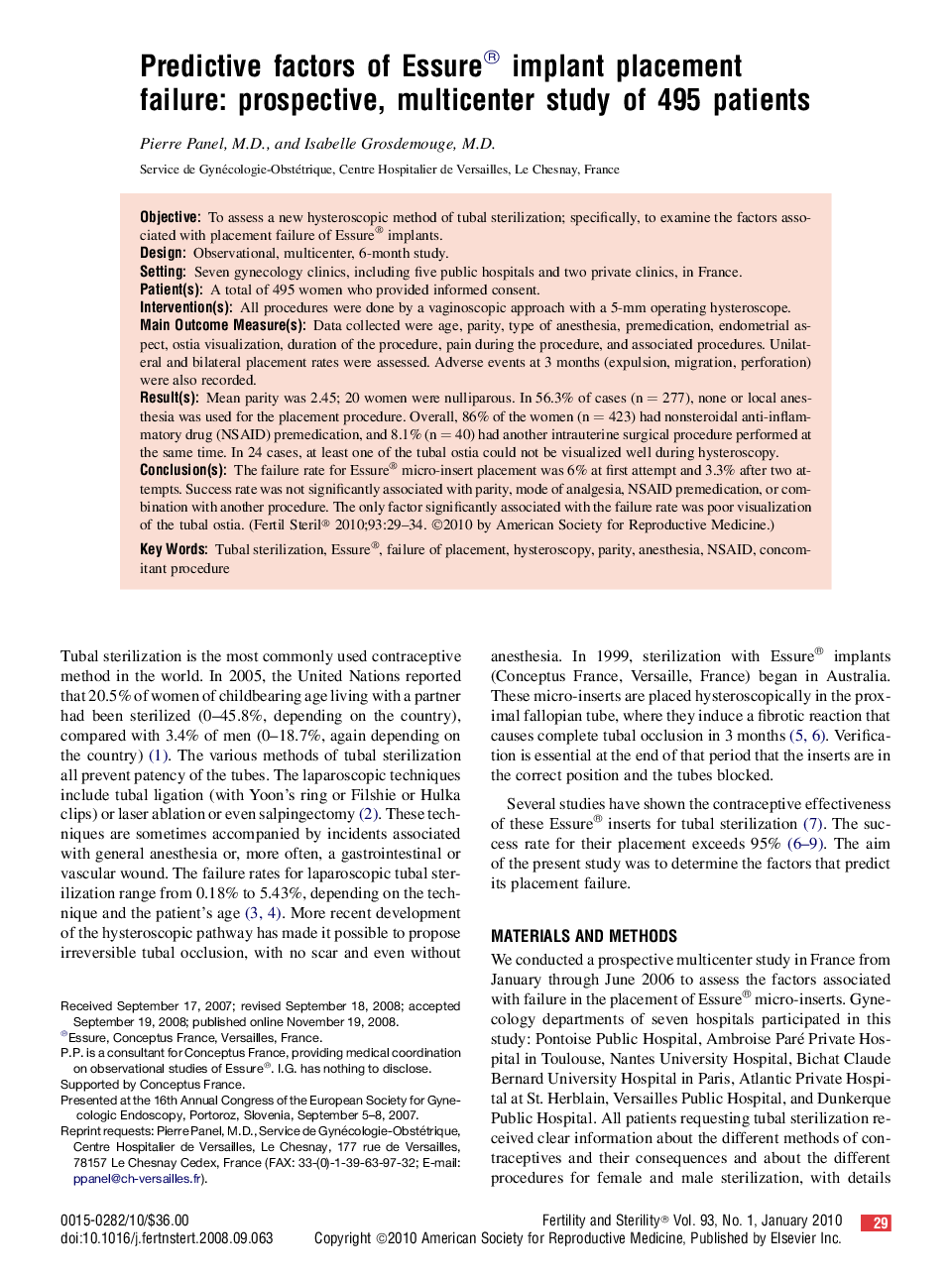| Article ID | Journal | Published Year | Pages | File Type |
|---|---|---|---|---|
| 3938454 | Fertility and Sterility | 2010 | 6 Pages |
ObjectiveTo assess a new hysteroscopic method of tubal sterilization; specifically, to examine the factors associated with placement failure of Essure® implants.DesignObservational, multicenter, 6-month study.SettingSeven gynecology clinics, including five public hospitals and two private clinics, in France.Patient(s)A total of 495 women who provided informed consent.Intervention(s)All procedures were done by a vaginoscopic approach with a 5-mm operating hysteroscope.Main Outcome Measure(s)Data collected were age, parity, type of anesthesia, premedication, endometrial aspect, ostia visualization, duration of the procedure, pain during the procedure, and associated procedures. Unilateral and bilateral placement rates were assessed. Adverse events at 3 months (expulsion, migration, perforation) were also recorded.Result(s)Mean parity was 2.45; 20 women were nulliparous. In 56.3% of cases (n = 277), none or local anesthesia was used for the placement procedure. Overall, 86% of the women (n = 423) had nonsteroidal anti-inflammatory drug (NSAID) premedication, and 8.1% (n = 40) had another intrauterine surgical procedure performed at the same time. In 24 cases, at least one of the tubal ostia could not be visualized well during hysteroscopy.Conclusion(s)The failure rate for Essure® micro-insert placement was 6% at first attempt and 3.3% after two attempts. Success rate was not significantly associated with parity, mode of analgesia, NSAID premedication, or combination with another procedure. The only factor significantly associated with the failure rate was poor visualization of the tubal ostia.
